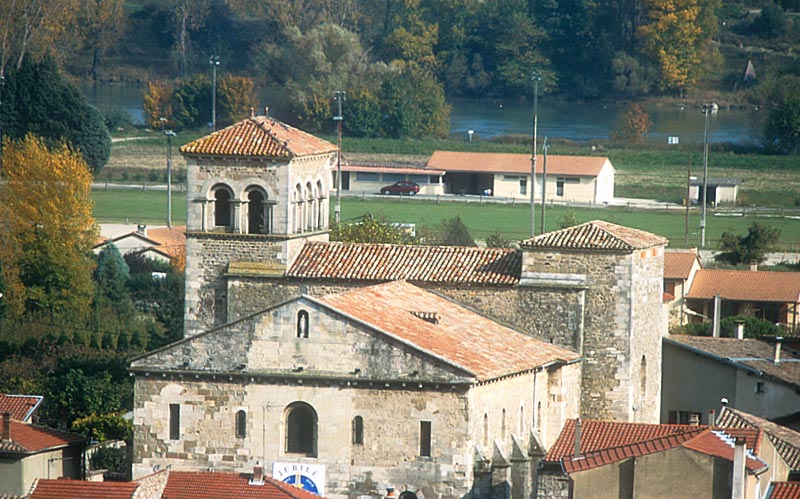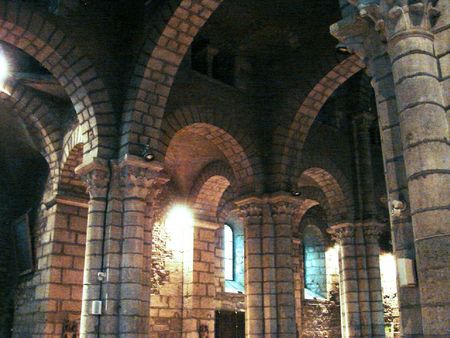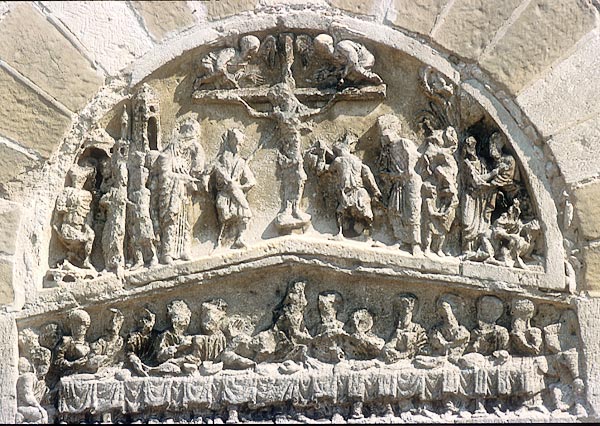Champagne, Ardèche
Champagne is a commune with 613 inhabitants (as of January 1, 2011 ) in Ardèche, in the Rhône -Alpes. Its inhabitants are Champonais (it) called.
Geography
Champagne is located in the extreme north of Ardeche, on the right bank of the Rhône, and thus on the border to neighboring the Drome region. Neighboring municipalities are Peyraud in the north, Saint- Rambert- d'Albon in the east, in the southeast Andancette, Saint- Désirat in the south and Bogy in the West. The nearest major town is Annonay seven miles away to the southwest.
History
Champagne was in the Middle Ages in the possession of the Counts of Albon. At the beginning of the 14th century, resulted in a community charter for general fees freedom. Until 1789 the village was an enclave of the province of Dauphiné in the Kingdom of France.
Culture and sights
Abbey Church of St. Pierre
Become known beyond the borders of the region is the town especially for the Romanesque church of Saint -Pierre, built in the 11th and 12th centuries. It is one of only three churches in France, whose nave is covered by domes over squinches. The masterpiece of Romanesque art was initially intended as a fortified church. Therefore, the choir chair was grown only in the 15th century. Particularly worth seeing the engraved reliefs, fantasy animals and human figures are showing.
Against 1026, the reunification of the bishops of the Kingdom of Burgundy was held in the church. Since then, the church belonged to the powerful Counts of Albon. Then it was priory of the abbey of Saint- chief in the department of Isère, from simple parish church in 1328. It was in 1968 the monastery church again and today Abbey Church of the Augustinian Canons of St. Victor ( Victorines ).
Old Ferry
Another attraction is the stone Traille to commemorate the old ferry terminal the community Pile du Bac à. Although the Port of Champagne has not been mentioned in texts before 1347, still bears witness to a treaty of 1255 between the reigning Count of Albon and the pastor of Champagne by the existence of this transport route. First, this only served as a bridge between the Dauphiné and its exclave in a favorable position, where the Rhone is narrowest and the flux due to two embankments can not transgress. But also stack goods were transported across the river later. Until 1790, the port was in possession of the Archbishop of Vienne.
In 1816, he was replaced by a large ferry with 14 meters long and 3.6 meters wide. On August 24, 1896, was, however, an accident which put an end to the port: the driver of the tractor Le Pilat forgot the chimney height of the bridge lower and collided with the structure. Due to the vibration of the ferry piers were knocked on the shore and broke the bridge into numerous pieces.



_Saint-Pierre_117.JPG/280px-Champagne_(Ard%2525C3%2525A8che)_Saint-Pierre_117.JPG)


